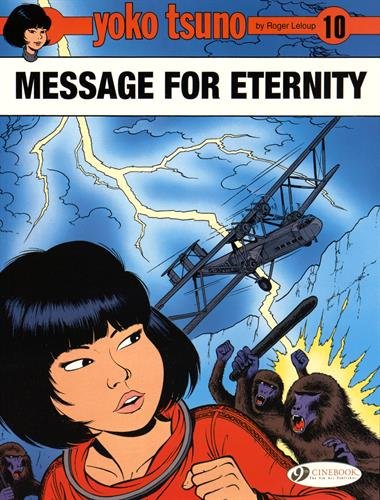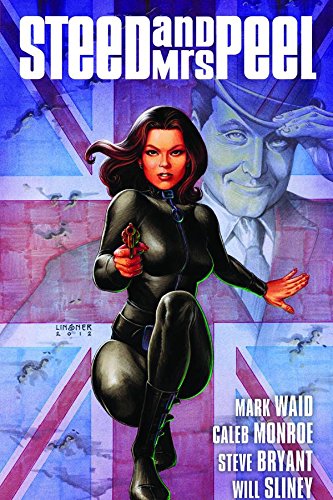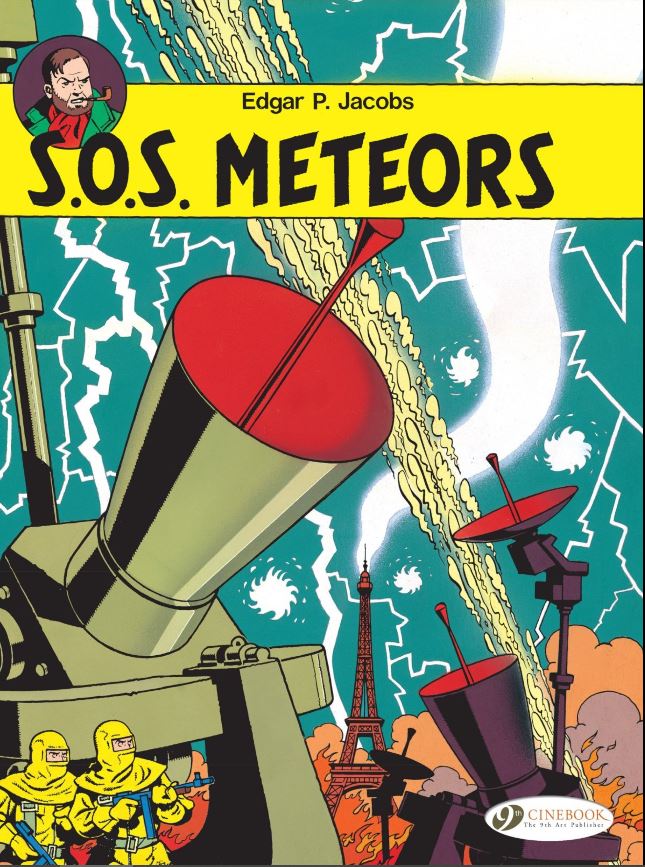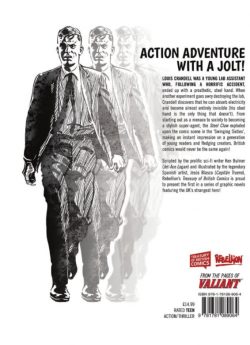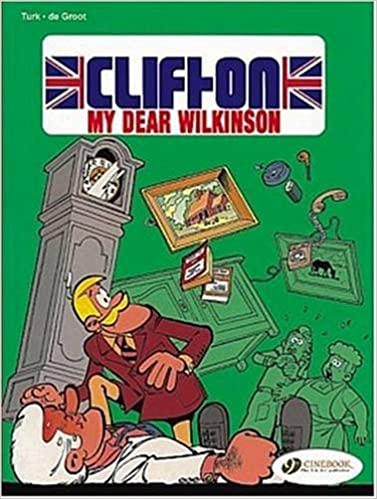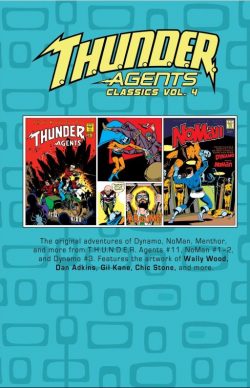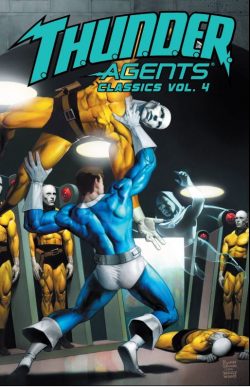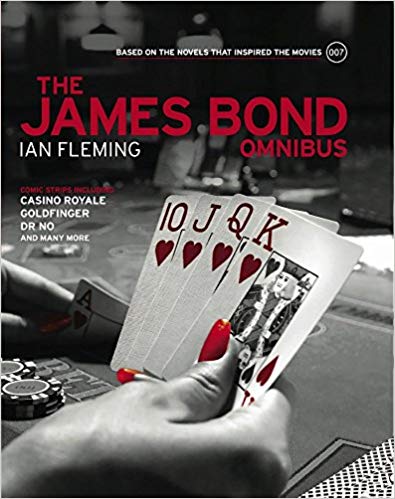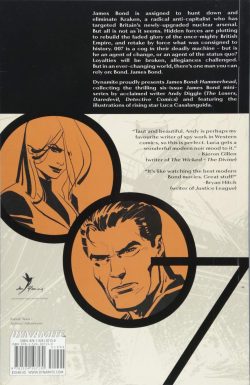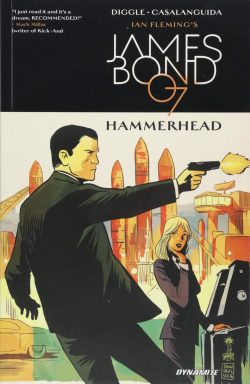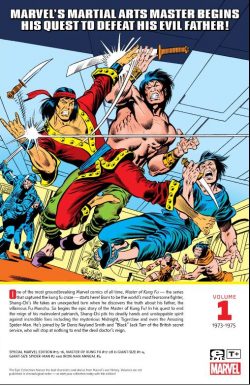
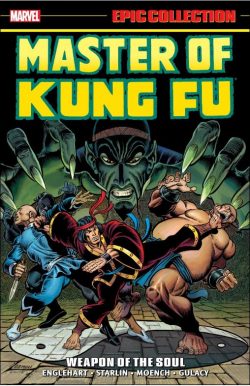
By Steve Englehart, Jim Starlin, Doug Moench, Gerry Conway, Len Wein, Roger Stern, Paul Gulacy, Ron Wilson, Al Milgrom, Ross Andru, Keith Pollard, Alan Weiss, Walter Simonson, John Buscema, Ed Hannigan, Aubrey Bradford, P Craig Russell, Frank McLaughlin, Jeff Aclin & various (Marvel)
ISBN: 978-1-3029-0135-6 (TPB)
Comic books have always operated within the larger bounds of popular trends and fashions – just look at what got published whenever westerns or science fiction dominated on TV – so when the ancient philosophy and discipline of Kung Fu made its unstoppable mark on domestic western entertainment, it wasn’t long before all those kicks and punches found their way onto four-colour pages of America’s periodicals. Early starter Charlton added Yang and House of Yang to the pioneering Judo Joe and Frank McLaughlin’s Judomaster; DC debuted Richard Dragon and rebooted Karate Kid; Atlas/ Seaboard opened The Hands of the Dragon and Marvel rapidly converted a proposed literary adaptation into an ongoing saga about a villain’s son. A month after it launched, a second orient-tinged hero in Iron Fist: combining combat philosophy, high fantasy and magic powers with a proper superhero mask and costume…
At their core, comics are just another mass-media entertainment form, but even (or do I mean especially?) the most frivolous fun for the largest audiences may carry at its heart cultural and social iniquity, easily-exploitable prejudices and dangerously-pernicious stereotyping and profiling. With that in mind, here’s a thorny subject for all concerned, on so many levels…
After the sublime success and cultural phenomenon of the Black Panther movie, people of colour finally had a heroic icon and cultural touchstone of their very own. The glorious and affirmative characters and stories were based on comics generated over many years by a multitude of talented, well-meaning creators, all originating at a company that was generally liberal, socially aware and earnestly seeking to address issues of prejudice and inclusivity whenever and wherever they found them.
That was black folk sorted, right? However, people of Asian ancestry still cry out for something of relevance and meaning to them. That’s why there’s a blockbuster Shang-Chi movie heading towards our screens in September.
It’s also notionally based on some incredible comics by a variety of gifted individuals and teams, but the white world in general and Marvel in particular have a different kind of history with those of Asian heritage…
Although largely retrofitted for modern times, inspirational Master of Kung Fu star Shang-Chi comes with a lot of tricky baggage. He debuted in the autumn of 1973, cashing in on a 1970s craze for Eastern philosophy and martial arts action which generated an avalanche of “Chop Sockey†movies and a controversial TV sensation entitled Kung Fu. You may recall that the lead in that western-set saga was a half-Chinese Shaolin monk, played – after much publicised legal and industry agitation – by a white actor…
At Marvel, no one at that time particularly griped about the fact that Shang-Chi was designed by editor Roy Thomas and artisans Steve Englehart, Jim Starlin & Al Milgrom as a naive innocent (also half Chinese, with an American mother) thrown into tumultuous modern society as a rebellious but involved counterpoint to his father: an insidious scheming fiend intent on global domination.
Back then, securing rights to a major literary property and wrapping new comics in it was an established practise. It had worked spectacularly with Conan the Barbarian and horror stars like Dracula and Frankenstein. The same process also brilliantly informed seminal science fiction icon Killraven in War of the Worlds and plenty more…
These days we comics apologists keep saying “it was a different eraâ€, but I genuinely don’t think anyone in the editorial office paused for a moment of second thoughts when their new Kung Fu book secured the use one of literature’s greatest villains as a major player. Special Marvel Edition #15 (cover-dated December 1973) launched to great success, and the overarching villain was already a global personification of infamy …Fu Manchu.
Arthur Henry Sarsfield Ward AKA Sax Rohmer’s ultimate embodiment of patronising mistrust and racist suspicion had been hugely popular since 1913’s The Mystery of Dr. Fu-Manchu. The prime archetype for mad scientists and the remorseless “Yellow Peril†threatening civilization, the character spread to stage, screen, airwaves and comics (even appropriating the cover of Detective Comics #1, heralding an interior series that ran until #28), but most importantly, became the visual affirmation and conceptual basis for countless evil “Asiaticsâ€, “Orientals†and “Celestials†dominating popular fiction ever since.
In recent years as we’ve all (well, mostly all) acknowledged past iniquities, Shang-Chi has been reimagined, with that paternal link downplayed or abandoned – as much for licensing laws as social justice.
For the movie, the villainous sire is now The Mandarin, but that only reminds us that, over its decades of existence, Marvel has employed plenty of “Yellow Peril†knock-offs and personifications – including Wong Chu; Plan Tzu (AKA the Yellow – or latterly Golden – Claw); Huang Zhu; Silver Samurai; Doctor Sun ad infinitum: all birds of another colour that are still nastily pejorative shades of saffron. Perhaps this is just my white guilt and fanboy shame talking. These stories, crafted by Marvel’s employees were – and remain – some of the best action comics you’ll ever encounter, but never forget what they’re actually about… distrust of the obviously other…
Without making excuses, I should also state that despite the easy, casual racism suggested by legions of outrageously exotic, inscrutable bad guys haunting this series at every level, Master of Kung Fu did sensitively address issues of race and honestly attempt to share non-Christian philosophies and thought whilst, most importantly, offering potent and powerful role models to kids of Asian origins. So at least there’s that to defend…
Packed with stunning adventure and compellingly convincing drama, this trade paperback and digital collection gathers far-ranging appearances from Special Marvel Edition #15-16; Master of Kung Fu #17-28; Giant-Size Master of Kung Fu #1-4; Giant-Size Spider-Man #2, plus material from Iron Man Annual #4 (collectively spanning December 1973-August 1977) and it opens without a preamble in the middle of a mighty battle…
‘Shang-Chi, Master of Kung Fu!’ introduces a vibrant, brilliant young man raised in utter isolation in the style and manner of imperial China. Reared by monks and savants, the boy is the result of a match between a physically perfect American woman and misunderstood patriot Fu Manchu: a noble hero unfairly hunted and slandered by corrupt western governments and the communist usurpers now blasphemously controlling the world’s greatest empire.
This son was schooled to respect and obey his sire, trained to perfection in martial arts: designed as the ultimate warrior servant and the doctor’s devoted personal weapon against lifelong enemies Sir Dennis Nayland Smith and Doctor Petrie.
On reaching maturity, Shang – who’s name means “the rising and advancing of a spirit†– is despatched to execute Petrie, but after the obedient weapon executes his mission, he subsequently questions his entire life and the worldly benefit of killing an elderly, dying man. An emotional confrontation with Nayland Smith – who endures the daily agonies of being maimed at the Devil Doctor’s command – further shakes the boy’s resolve and eventually Shang’s sublime education demands that he reassess everything his father has taught him…
After invading the villain’s New York citadel and crushing his army of freaks and monsters, Shang Chi faces his father and rejects all he stands for. The battle lines of an epic family struggle are drawn…
Focusing on the madness of modern living, outcast misfit Shang navigates the perils of New York City in the next episode, before reluctantly fighting his childhood companion M’nai in ‘Midnight brings Dark Death!’ It’s another bittersweet betrayal, since Midnight has always known of Fu’s true nature and happily acted as his infallible assassin… until now…
The series had launched in bimonthly reprint title Special Marvel Edition as The Hands of Shang Chi: Master of Kung Fu and by the third issue (April 1974) it became exclusively his. Issue #17’s ‘Lair of the Lost!’ introduced (a painfully, equally stereotypical) True Brit foe who would soon become a trusted ally.
Blackjack Tarr seeks vengeance for his old ally Petrie; luring Shang Chi to a private murder mansion. However, the battle royal ends with all concerned re-evaluating their positions and agreeing to unite to defeat the actual enemy of all humanity…
Scripted by Englehart and inked by Milgrom, #18 was the true turning point in the series. Newcomer Paul Gulacy became penciller, blending a love of popular cinema with a vivid illustration style based on the comics designs of Jim Steranko. ‘Attack!’ sees Shang taking his war to Fu Manchu and his complex, convoluted secret society of assassins and acolytes, invading Fu’s New York base to deliver a salutary declaration of war before undertaking his first mission for spymaster Nayland Smith.
Despatched to Florida to intercept mysterious smugglers and an unknown cargo, the Master of Kung Fu foils a scheme to poison America’s gasoline supply, defeats a supernaturally enhanced Dacoit (look it up: Rohmer’s literary creation enlisted almost every Asian subculture into an admittedly beguiling army of oriental killers faithfully aligned against white imperialism) and escapes a hallucinogenic ambush…
Promoted to monthly with #19 (August 1974), the next chapter sees the hero’s full initiation into the Marvel Universe with a crossover. ‘Retreat’ depicts the still-drugged Shang lost in the Everglades, hunted by assassins and clashing with the monstrous Man-Thing. There’s even a cheeky acknowledgement of the series’ antecedents with a cameo starring a certain TV Sino-American wandering philosopher…
Gerry Conway scripts ‘Weapon of the Soul’ as Mafia boss Demmy Marston targets Shang Chi in an effort to curry favour with Fu Manchu before Doug Moench begins his long association with the series in concluding chapter ‘Season of Vengeance…’ (illustrated by Ron Wilson & Milgrom) clearing the decks for explosive action and epic adventure by demonstrating why Fu is the most dangerous ally an ambitious crook could ever encounter…
By this time – the summer of 1975 – the series was one of Marvel’s most successful, spawning guest shots and extra issues galore. Cover-dated September 1974, Giant-Size Master of Kung Fu #1 offered even more martial arts mayhem in a quarterly spin-off that opened with ‘Death Masque!’ (Moench, Gulacy & Dan Adkins). To celebrate Shang’s birthday, his father orchestrates a terrifying gauntlet of killers, even as the son infiltrates his administrative Council of 7: the Si-Fan…
The double-sized issue also offers apparent change-of-pace yarn ‘Frozen Past, Shattered Memories’ (Moench & P. Craig Russell) as Shang fails to foil a museum robbery; a fact page on ‘Shaolin Temple Boxing’ by comic book Kung Fu pioneer Frank McLaughlin and a parable on racism and psychopathy in Moench, Wilson & Mike Esposito’s ‘Reflections in a Rippled Pool!’
In quick order, Giant-Size Spider-Man #2 (October 1974, by Len Wein, Ross Andru & Milgrom) reinforced the hero’s crossover credentials as ‘Masterstroke!’ finds the wondrous webslinger drawn into battle with the Master of Kung Fu after Fu Manchu frames Spider-Man for attacking Chinese-Americans and sabotaging New York’s power grid. Eventually the duped heroes clear the air Marvel-style in ‘Cross… and Double-Cross!’ before uniting to foil the madman’s true scheme to mindwipe America from the ‘Pinnacle of Doom!’
MOKF #22 (November) sets up the next phase of Shang’s life as a secret agent. In ‘A Fortune of Death!’ (Moench, Gulacy & Dan Adkins) he saves Nayland Smith and Blackjack Tarr while foiling another attempt to destroy America’s complacency and security before Giant-Size Master of Kung Fu #2 (December 1974, by Moench, Gulacy & Jack Abel) declares ‘The Devil-Doctor’s Triumph’ with romantic distraction Sandy Chen enticing our young lonely warrior before tragically teaching him the power of deceit while courting his aid to rescue her father from his father…
With Gulacy going from strength to strength in the Giant-Size tales, Al Milgrom & Klaus Janson stepped in for Moench’s next twisty epic; beginning in MOKF #23 as Shang agrees to quash his father’s potential alliance with a Nazi war criminal, necessitating a lethal voyage up the ‘River of Death!’ The bloody debacle goes completely off-script in ‘Massacre Along the Amazon!’ (Milgrom, Alan Weiss, Starlin, Walt Simonson & Sal Trapani) as Si-Fan, neo-Nazis and indigenous forest people clash, leading to Shang running a savage gauntlet in brutal conclusion ‘Rites of Courage, Fists of Death!’ (Gulacy & Trapani).
Vince Colletta inks Giant-Size Master of Kung Fu #3 (March 1975) as ‘Fires of Rebirth’ introduces British agent Clive Reston (an homage to and descendent of literary icons like James Bond and Sherlock Holmes) as both sides in the unending war seek the last remaining stock of Fu Manchu’s immortality-inducing Elixir Vitae. The hunt catastrophically encompasses Central Park West, the British Museum and Buckingham Palace, involving lethal Phansigars, reanimated Neanderthals and potential new archnemesis Shadow-Stalker before delivering an utterly life-altering surprise to Shang-Chi…
Digging deeper into Romer’s novels, Moench increasingly capitalizes on Fu Manchu’s expansive cast with Master of Kung Fu #26. Limned by Keith Pollard & Trapani, ‘Daughter of Darkness!’ features the Devil Doctor’s recalcitrant first-born Fah Lo Suee (who debuted in either third book The Si-Fan Mysteries/The Hand of Fu-Manchu in 1917 or fourth outing The Daughter of Fu-Manchu in 1931, depending on who you ask) and the son of former valiant Brit Shan Greville and her latest treacherous scheme to supplant her sinister sire using an ancient Egyptian relic…
John Buscema & Frank Springer unite to depict Moench’s ‘Confrontation’ as the family war intensifies over possession of the last dregs of Elixir Vitae and conflicted Shang is pressed to pick a side after the collateral death of an innocent bystander after which Wilson, Ed Hannigan & Aubrey Bradford join Moench and Trapani for #28 as ‘A Small Spirit Slowly Shaped…’ finds Shang Chi invading his childhood home in Honan to save Nayland Smith from his ascendant sister…
Slightly askew of the tight continuity, Giant-Size Master of Kung Fu #4 (June 1975) absurdly enquires ‘Why a Tiger-Claw?’ in a surreal comedy thriller from Moench, Pollard & Trapani as Shang encounters Groucho Marx tribute and living force of irascible nature Rufus T. Hackstabber when a mundane bank robbery leads to a rebellious Si-Fan assassin with a personal agenda and big ambitions…
Wrapping up the martial arts mastery is a short piece from Iron Man Annual #4 (August 1977): an out-of-place Kung Fu vignette by Roger Stern, Jeff Aclin & Don Newton. ‘Death Lair!’ stars the long dead but never forgotten Midnight on a mission of murder for Fu Manchu and targeting Vietnamese rival and old Iron Man enemy Half-Face…
Adding value to the package are Starlin & Milgrom’s original art for the cover of Special Marvel Edition #15; Roy Thomas’ editorial from that issue and assorted house ads, a spoof ad from official fanzine F.O.O.M. and an unused Starlin & Milgrom cover for #17.
In recent years, Shang Chi’s backstory has been forced to adapt and alter. His father has been reinvented as Zheng Zu, Mr. Han, Chang Hu, Wang Yu-Seng and The Devil Doctor and in the end, you have the ultimate choice and sanction of not buying or reading this material.
If you do – with eyes wide open and fully acknowledging that the past is another place that we can now consign to history – your comics appreciation faculties will see some amazing stories incredibly well illustrated: ranking amongst the most exciting and enjoyable in Marvel’s canon.
© 1973, 1974, 1975, 1977, 2018 Marvel Characters, Inc. All rights reserved.
